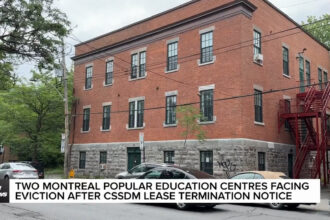In a troubling economic development that has caught the attention of policymakers and analysts alike, Canada’s income gap has widened to unprecedented levels during the first quarter of 2025, shattering previous records and raising serious questions about the nation’s post-pandemic recovery trajectory.
Statistics Canada’s latest economic report reveals that the disparity between the country’s highest and lowest earners has increased by 14.3% compared to pre-pandemic levels, with the top 1% of income earners now capturing nearly 27% of the nation’s total wealth. This marks the most significant wealth concentration since comprehensive records began in 1976.
“What we’re witnessing isn’t simply a continuation of existing trends, but rather an acceleration driven by complex post-pandemic economic forces,” explains Dr. Amrita Singh, chief economist at the Canadian Centre for Policy Alternatives. “The recovery hasn’t been uniform across sectors, creating winners and losers in a dramatically reshuffled economy.”
The data shows particularly concerning patterns in urban centers. Toronto and Vancouver have experienced the most dramatic increases in inequality, with housing costs continuing to outpace wage growth for middle and lower-income families. Meanwhile, resource-dependent regions in Alberta and Saskatchewan show diverging fortunes depending on their success in transitioning to green energy economies.
Several factors appear to be driving this widening gap. The technology sector’s explosive growth has created tremendous wealth for those with specialized skills and capital investments. Simultaneously, automation has accelerated across manufacturing and service industries, eliminating many middle-income positions. Additionally, the gig economy’s continued expansion has replaced traditional employment with less stable income streams for many Canadians.
Finance Minister Carla Morrison acknowledged the concerning trend during yesterday’s press conference, stating: “These figures represent a significant challenge to our vision of inclusive prosperity. The federal government is preparing comprehensive measures to address these structural imbalances while maintaining economic competitiveness.”
Opposition critics have been quick to highlight the government’s previous promises to tackle inequality. Conservative finance critic James Robertson remarked: “For three years, this government has claimed their policies would reduce inequality. These numbers expose the failure of their approach and demand immediate course correction.”
Economic analysts point to several policy options that could address the growing divide. These include reforms to capital gains taxation, expansion of affordable housing initiatives, and strengthened labor protections for gig workers. The Bank of Canada has also signaled potential adjustments to monetary policy, though it emphasized that inequality stems primarily from structural factors beyond central bank control.
Perhaps most concerning is the report’s finding that intergenerational mobility—the likelihood that children will earn more than their parents—has declined significantly. Young Canadians now face steeper challenges in achieving financial security than previous generations, particularly without inherited wealth or advanced education.
As Canada navigates this period of significant economic transformation, the question remains whether our social and economic institutions can adapt quickly enough to ensure prosperity is shared across all segments of society. Will Canada’s renowned social safety net require fundamental redesign to address 21st-century economic realities, or can targeted interventions reverse this troubling trend before inequality becomes further entrenched?

























